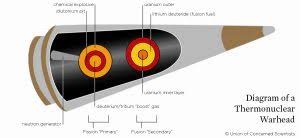Life with Nuclear Weapons
78 years after the dawn of the atomic age depicted in the film Oppenheimer, over 13,000 nuclear weapons exist on the planet — 90% of which are possessed by the United States or Russia. If detonated, only a small fraction of these bombs could kill billions of people and effectively end human civilization as we know it. What’s more,
Continue reading →


